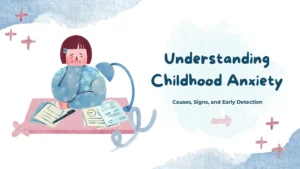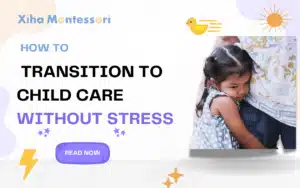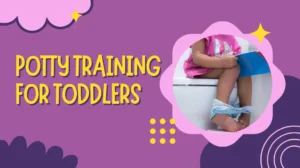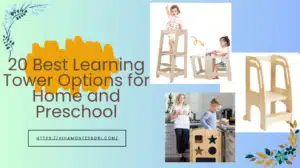Early learning centers are pivotal in the early stages of child development, offering a structured environment where young minds can embark on their educational journey. These centers, dedicated to the growth and nurturing of children, provide the essential foundation for cognitive, emotional, and social skills. Crafting the perfect early learning center means creating a space where curiosity, creativity, and a love for learning can flourish.
The key to crafting the perfect early learning center lies in selecting high-quality, purpose-built furniture and resources. At Xiha Montessori, we specialize in providing top-tier kindergarten furniture that can be customized to meet the specific needs of any early learning environment. From tables and chairs designed for small bodies to storage solutions that encourage independence, our products ensure a blend of safety, ergonomics, and engaging design.
Creating a nurturing and stimulating environment is crucial for young learners. With years of experience, We learned that the physical space greatly influences children’s ability to explore, learn, and grow.
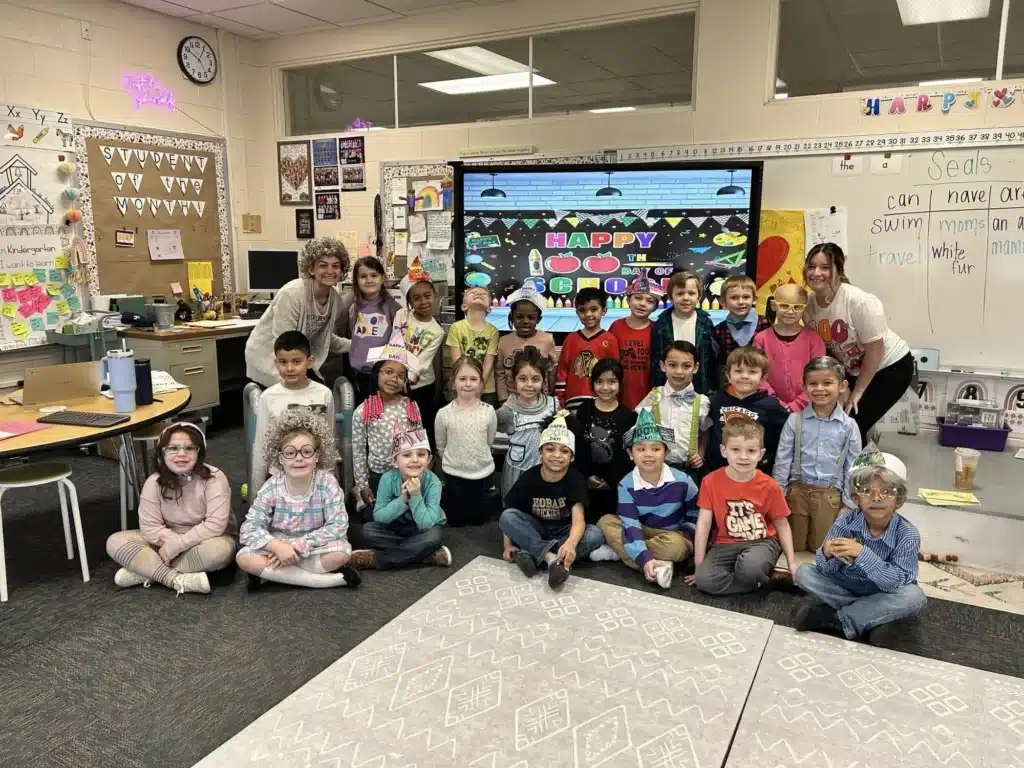
What is an Early Learning & Early Learning Center?
Early learning refers to the educational approach and activities designed for young children before they enter compulsory schooling. It’s all about laying a strong foundation for lifelong learning and development. This phase covers a range of key areas including cognitive development, emotional and social skills, physical abilities, and language skills. It’s not just about academic learning; it’s about nurturing curious, resilient, and socially adept individuals.
An early learning center is more than just a physical location where children spend their day under supervision. It’s a nurturing environment designed to stimulate young minds, fostering growth and development through play, education, and social interaction. Unlike traditional childcare settings, early learning centers focus on structured learning and development programs tailored to children from infancy through pre-kindergarten age. These centers operate with the understanding that early childhood is a crucial period for cognitive, emotional, and social development.
Early learning centers are staffed by educators trained in early childhood education, equipped to create engaging, age-appropriate learning experiences. These centers often incorporate a curriculum that includes language development, basic literacy and numeracy skills, art and music, physical education, and social skills development, aiming to prepare children for the transition to formal schooling.
15 Benefits of Early Learning Centers
- Jumpstart on Learning: Think of early learning centers as a head start in school. Kids get to learn the basics like ABCs and 123s in a way that’s super fun and engaging.
- Making Friends: It’s like the social club for little ones. Kids learn to play, share, and work together with friends, which is great for building social skills they’ll use all their life.
- Feeling Good About Themselves: These centers are all about helping kids feel proud of what they can do, helping them try new things, and cheering them on all the way.
- Becoming Little Problem Solvers: Whether it’s figuring out a puzzle or learning to tie their shoes, kids get plenty of chances to think things through and solve problems.
- Staying Active: With all the running, jumping, and playing, kids get to move a lot, which is awesome for their health and helps them get all their wiggles out.
- Unleashing Creativity: From painting to dress-up, kids get to express themselves in all sorts of creative ways, helping them see the world in vibrant colors and interesting ideas.
- Getting Ready for School: It’s like the dress rehearsal for kindergarten. Early learning centers help kids get used to routines and what it’s like to be in a classroom.
- Learning About Everyone: Kids meet friends from all sorts of backgrounds and learn to appreciate what makes everyone unique, setting the stage for understanding and kindness.
- Help for Parents: These centers are a big help for parents, too, offering advice on how to navigate the twists and turns of raising kids and understanding what they’re going through.
- A Safe Place to Be: Parents can breathe easy knowing their kids are in a place that’s not only fun but also really cares about keeping them safe and sound while they’re away.
- Confidence to Speak Up: Early learning centers are great places for kids to find their voice. They learn to speak up, ask questions, and express their ideas in front of others, which is a fantastic confidence booster.
- Patience and Turn-Taking: In the fun and structured environment of an early learning center, kids learn the art of waiting their turn and understanding that sometimes patience is key. This is an invaluable life skill that helps in all sorts of situations, from playing games to waiting in line.
- Exploring the Wonder of Books: Early exposure to books and stories sparks a love for reading that can last a lifetime. It opens up new worlds for children, enriching their imagination and vocabulary.
- Learning to Listen and Follow Directions: Through fun activities and games, kids get better at listening carefully and following instructions. This not only helps them in their current learning environment but sets them up for success in school.
- Building a Routine: Early learning centers help children adapt to a structured day, which includes learning times, play times, and rest times. Getting used to a routine helps kids feel secure and understand what’s expected, making daily transitions smoother for them and their families.
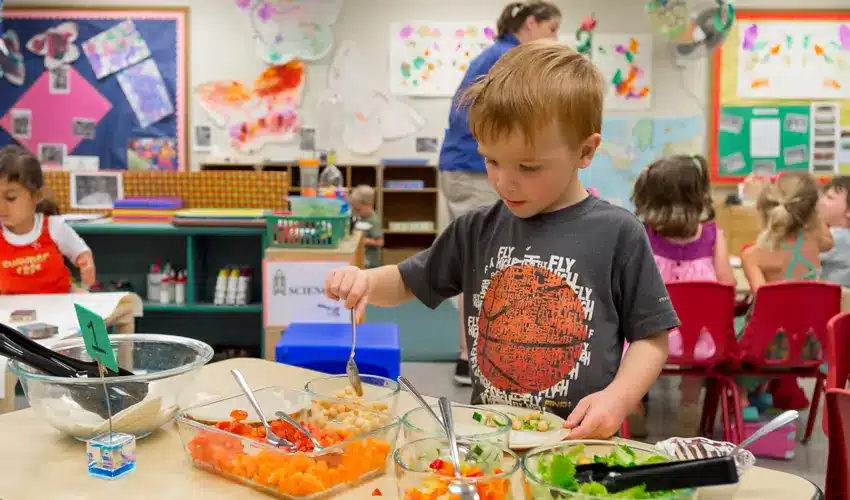
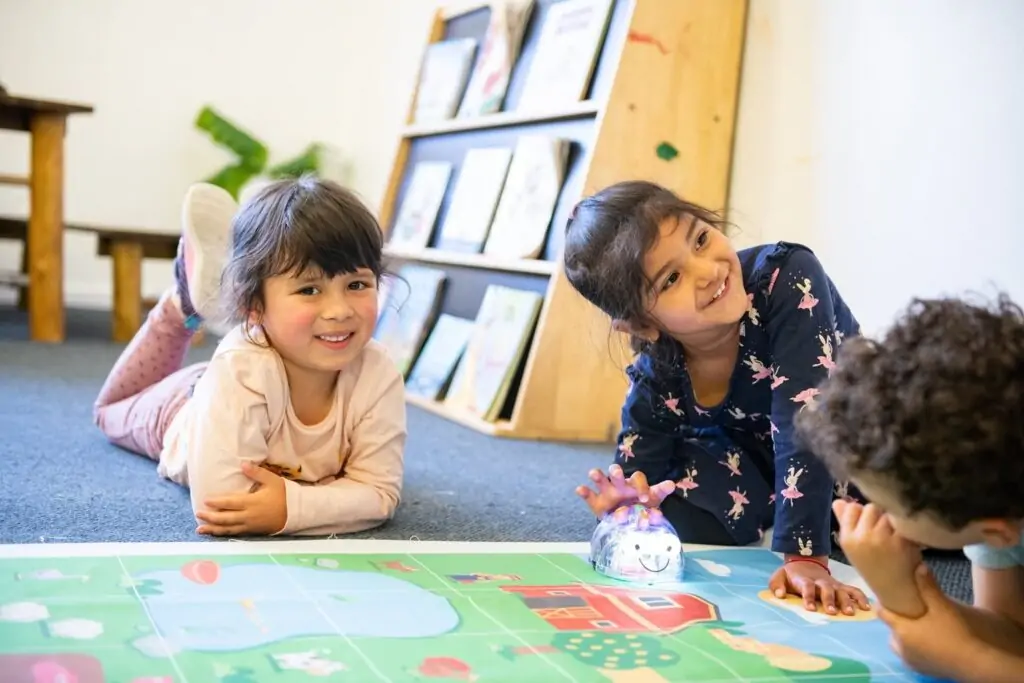
What is the Difference Between a Daycare and an Early Learning Center?
While both daycares and early learning centers provide childcare services, their focus and offerings significantly differ. Daycares primarily offer supervision and basic care needs for children, such as meals and nap times, catering to parents’ need for a safe environment for their children while they work. The emphasis is on safety, health, and general welfare rather than structured educational programming.
In contrast, early learning centers are educationally focused, offering structured learning and development programs designed to stimulate cognitive, social, emotional, and physical development. These centers are often led by educators with specialized training in early childhood education and follow a curriculum that prepares children for kindergarten and beyond.
Early learning centers not only care for children’s basic needs but also aim to provide a rich learning environment that fosters early development and readiness for formal schooling. They offer a blend of play-based and formal learning experiences, designed to cater to the developmental milestones typical of children in their care.
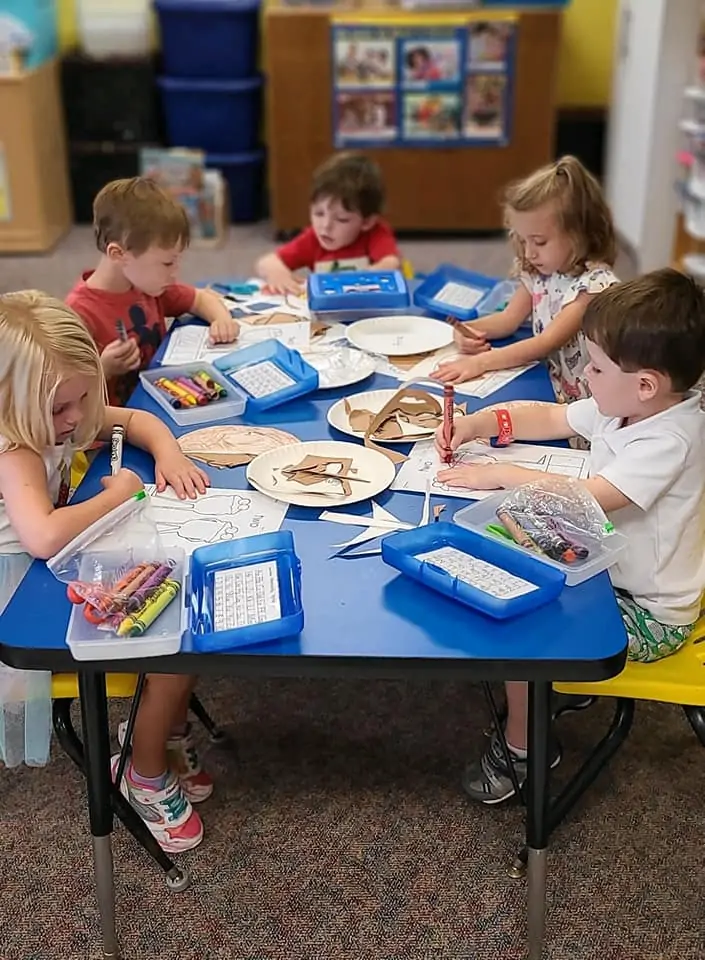
The perfect early learning center should combine functionality with creativity. It’s not just about having furniture; it’s about creating spaces that inspire young minds to explore and learn. Safety, flexibility, and the ability to customize according to the specific needs of children and educators are paramount. For more on the importance of safety and customization in early learning environments, visit here.
What is the Purpose of Early Learning Centers?
Early learning centers are vibrant hubs of activity designed to support the developmental needs of young children. They serve a multifaceted purpose, blending education, care, and growth opportunities to create a foundation for lifelong learning. At their core, these centers are about more than just providing a space for children while their parents are at work; they’re about nurturing the whole child.
The primary aim is to foster cognitive, social, emotional, and physical development through play-based learning, structured activities, and interaction with peers and adults. These centers offer a curriculum that often includes basics like numbers and letters, but they go much further by encouraging curiosity, problem-solving skills, and creativity.
Children learn to navigate social dynamics, understand and express their emotions, and develop the resilience and independence they’ll need in school and beyond. Additionally, early learning centers play a critical role in identifying and supporting any developmental delays or challenges children may face, ensuring that every child has the support they need to thrive.
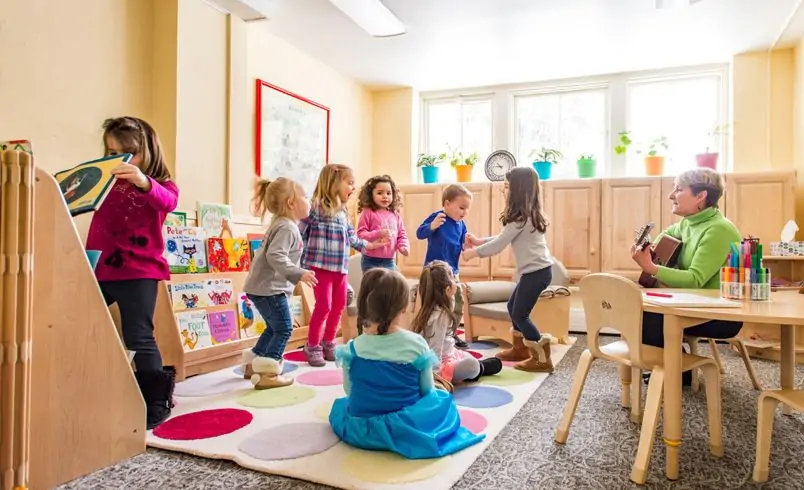
Here, we explore several key objectives that underline the importance of these centers:
Cultivating a Love for Learning
Early learning centers ignite curiosity and a love for learning in young minds. Through a variety of hands-on activities, children discover the joy in exploring new concepts and ideas. This early enthusiasm for learning lays a strong foundation for lifelong educational pursuits.
Enhancing Social and Emotional Development
One of the primary goals is to aid children in developing essential social skills. This includes learning to interact with peers, share, cooperate, and resolve conflicts. Emotional development is equally prioritized, as children are guided in recognizing and expressing their feelings in a healthy manner. This early emotional education is crucial for building empathy and self-regulation skills.
Encouraging Cognitive and Language Skills
Through storytelling, conversation, and interactive activities, early learning centers stimulate cognitive and language development. Children expand their vocabularies, improve their communication skills, and start developing early reading and math skills, setting the stage for academic success.
Supporting Physical Development
Physical activity is a staple of the daily routine, with a focus on both gross motor skills (like jumping, running, and climbing) and fine motor skills (such as drawing, cutting, and writing). These activities not only promote health and fitness but also support the development of coordination and body awareness.
Preparing for Formal Education
Early learning centers serve as a bridge to formal schooling. They introduce children to a structured environment, helping them adjust to routines and expectations found in schools. This preparation eases the transition into kindergarten, making it less overwhelming for both children and their families.
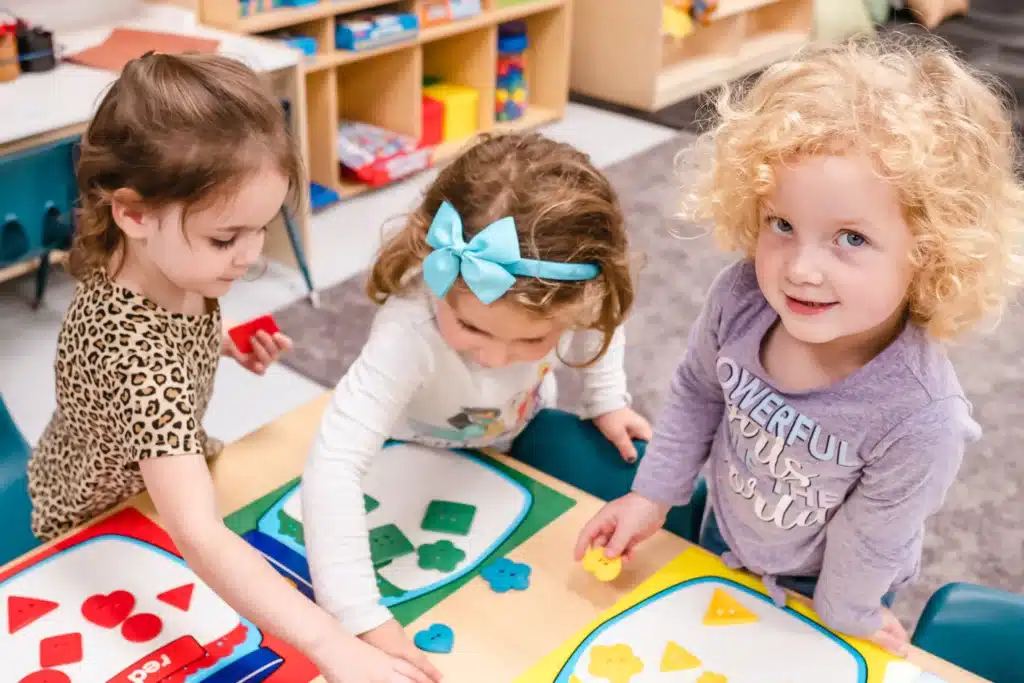
Providing Individualized Attention
Recognizing that each child is unique, early learning centers strive to provide individualized attention. Educators assess the strengths and needs of each child, tailoring activities and interactions to support their development. This personalized approach ensures that all children, regardless of their pace of learning or developmental stage, receive the support they need to flourish.
Fostering Creativity and Imagination
Creative expression is highly valued, with ample opportunities for children to engage in art, music, drama, and imaginative play. These activities not only enrich children’s cultural experiences but also stimulate creativity, a critical skill in problem-solving and innovation.
Building Confidence and Independence
Early learning centers are designed to nurture confidence and independence. Children are encouraged to take on new challenges, make decisions, and carry out tasks on their own. This empowerment boosts self-esteem and fosters a sense of accomplishment.
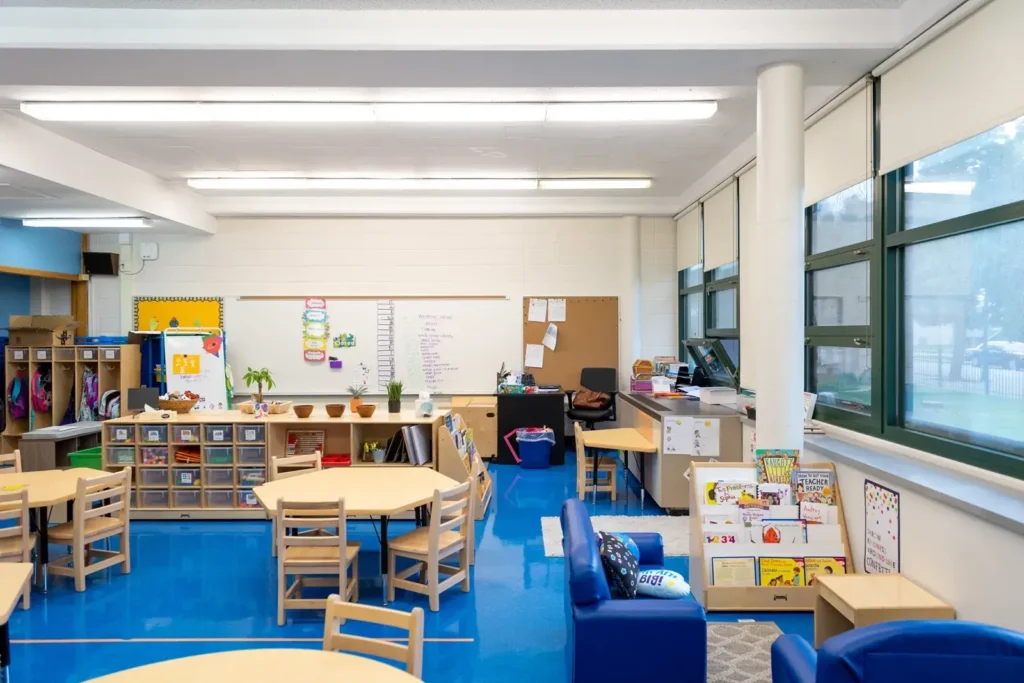
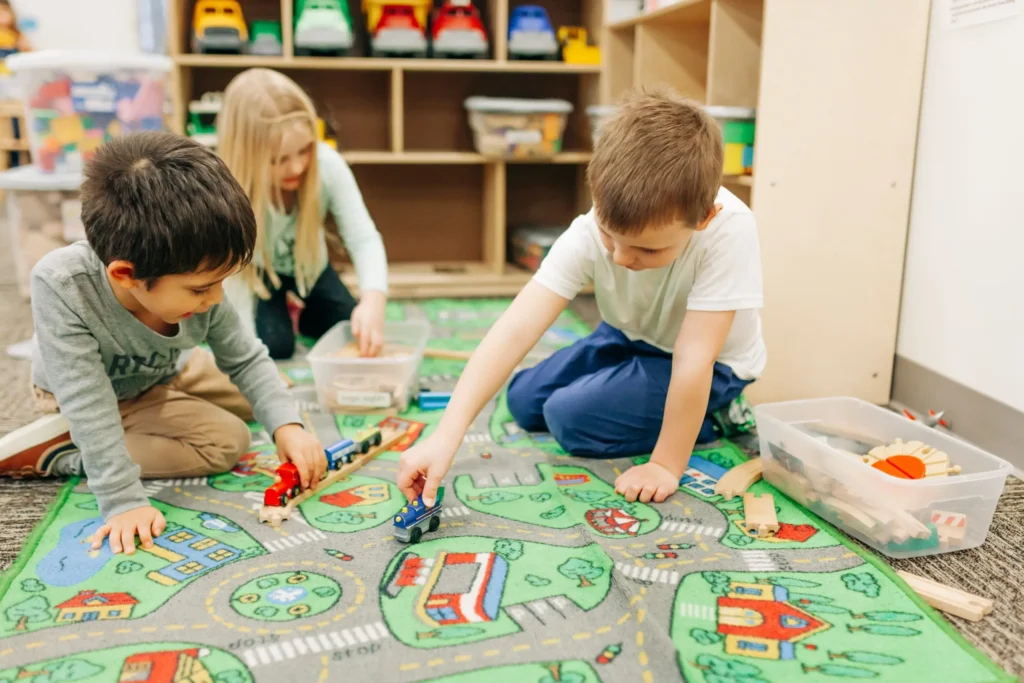
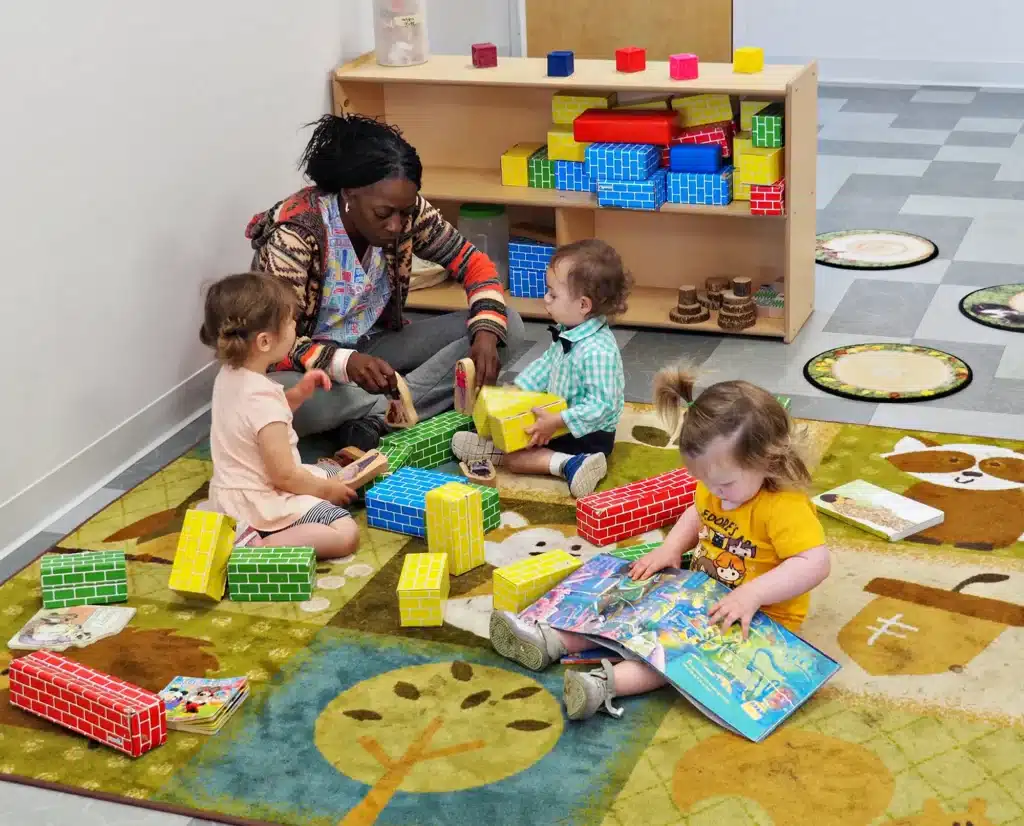
Is Early Learning the Same as Preschool?
The terms “early learning” and “preschool” are often used interchangeably, but they can signify different aspects of early childhood education. Early learning refers to the broad scope of learning experiences that children encounter from birth until they enter kindergarten. It encompasses all types of learning environments, from home settings to formal early learning centers, focusing on the holistic development of the child.
Preschool, on the other hand, is a specific type of early learning center designed for children in the years just before they enter kindergarten, usually ages 3 to 5. Preschool programs are structured to prepare children for the academic and social settings they’ll encounter in school. They focus on pre-literacy and pre-math skills, along with fostering socialization, creativity, and independence.
While all preschools are early learning centers, not all early learning centers are preschools. Some early learning centers cater to a broader age range, offering programs for infants and toddlers as well as preschool-aged children. The choice between a general early learning center and a preschool may depend on a family’s specific needs, the child’s age, and the desired focus of their early education.
Both sections highlight key aspects of early learning centers and the nuanced distinction between early learning and preschool, encapsulating the vital role these institutions play in children’s development. Each point serves as a foundation for further exploration into the complex, enriching world of early childhood education.
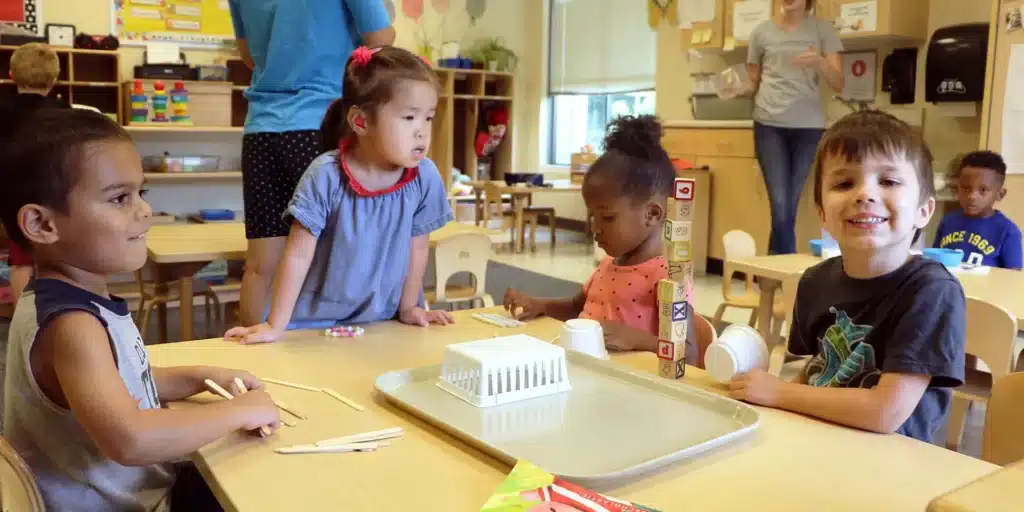
How Important Is Furniture Design in Early Learning Settings?
Furniture design in early learning centers is not just about aesthetics; it’s a crucial component that directly impacts children’s safety, comfort, and engagement in learning activities. Thoughtfully designed furniture can significantly enhance the educational experience, providing a supportive environment that caters to the physical and developmental needs of young learners.
Ergonomics and Safety
First and foremost, furniture in early learning settings must be ergonomically designed to suit the small stature of young children. Chairs and tables should enable children to sit comfortably with their feet flat on the floor and their wrists at a natural angle when writing or playing. Moreover, safety is paramount, with rounded corners, stable structures, and non-toxic materials being essential features to prevent accidents and ensure a healthy environment.
Flexibility and Adaptability
The dynamic nature of early learning activities requires furniture that is flexible and adaptable. Lightweight, easy-to-move pieces allow for quick reconfiguration of spaces to support various activities, from quiet reading time to interactive group projects. Adjustable furniture that can grow with children, serving them from toddlerhood through preschool, offers long-term value and sustainability.
Encouraging Independence
Furniture design can encourage independence among young learners by making resources and materials accessible. Shelves at child height, open storage units, and cubbies allow children to take charge of their learning materials, fostering a sense of responsibility and autonomy.
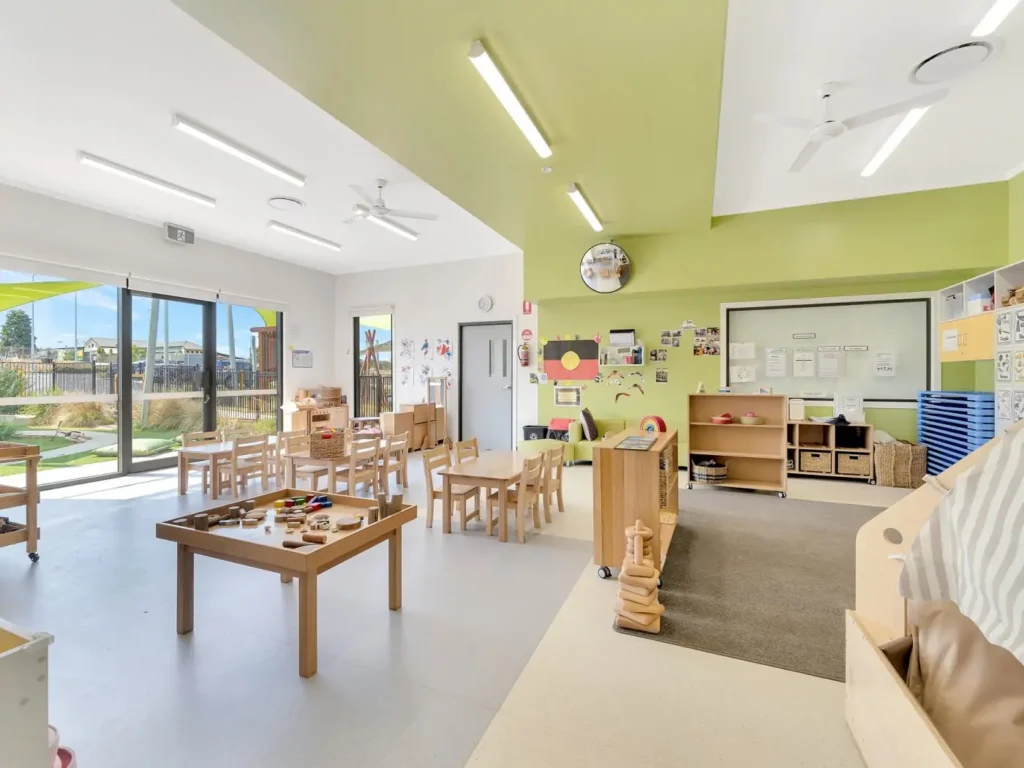
Stimulating Engagement
Colorful, imaginative furniture designs can stimulate children’s engagement and creativity. While aesthetics should never compromise safety or functionality, inviting and vibrant learning environments can inspire children to explore and participate actively in learning activities.
Can Customized Furniture Solutions Enhance Learning Outcomes?
In the world of early childhood education, the physical environment plays a pivotal role in shaping the experiences and learning outcomes of young children. Customized furniture solutions, tailored to the specific needs and goals of an early learning center, can profoundly enhance these outcomes. Here’s how customizing furniture to fit the educational environment can make a meaningful difference.
Tailored to Learning and Developmental Needs
Customized furniture allows for the creation of pieces that precisely meet the developmental stages and learning needs of children. For example, adjustable tables and chairs can be designed to accommodate various activities, from art projects to science experiments, ensuring children are comfortable and engaged. This attention to ergonomic design promotes better focus and participation, key components in effective learning.
Encourages Active Learning
Custom furniture can be designed to encourage movement and active learning. Pieces like modular play units or movable seating arrangements support a curriculum that values exploration and physical activity. This dynamic approach to learning helps children develop motor skills alongside cognitive skills, fostering a more holistic educational experience.
Supports Inclusive Education
By accommodating the diverse needs of all learners, including those with special educational needs or disabilities, customized furniture ensures every child can participate fully in the learning experience. Designing furniture with various heights, sizes, or adaptive features allows children of all abilities to feel included and supported, creating a more equitable learning environment.
Enhances Engagement Through Design
Custom furniture can also captivate children’s imaginations and curiosity, making learning more engaging. Thematic designs that reflect lessons or stories being taught can turn the classroom into an immersive learning environment. Whether it’s a reading nook shaped like a castle for fairy tale stories or science tables designed to resemble a laboratory, the physical setting can significantly boost engagement and retention of information.
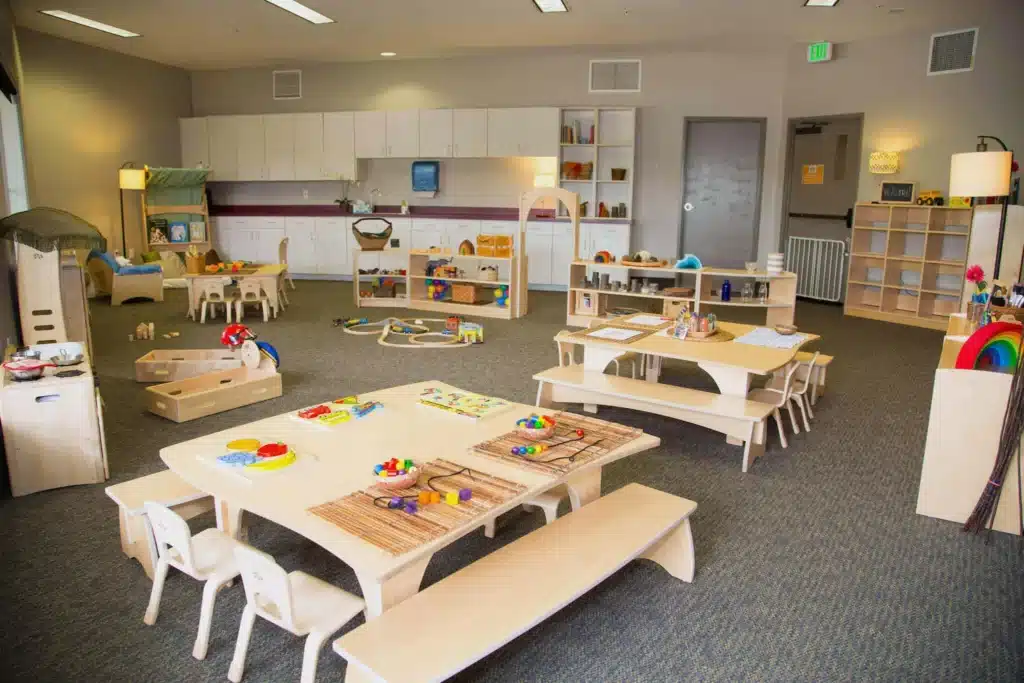
Reflects and Reinforces Educational Philosophies
Each early learning center operates with its own set of values and educational philosophies, from Montessori to Waldorf or Reggio Emilia. Customized furniture can be specifically designed to reinforce these philosophies, creating environments that are not just places for children to learn but spaces that embody the principles of their education. For example, Montessori classrooms benefit from furniture that supports independence and accessibility, while Reggio Emilia environments might focus on materials that encourage expression and collaboration.
In essence, customized furniture solutions do more than just fill a room. They create a learning environment thoughtfully designed to foster development, inspire curiosity, support inclusivity, and enhance the educational journey of every child. Through careful consideration of design, functionality, and the educational goals of the center, customized furniture becomes a vital tool in the mission to provide high-quality early childhood education.

What Should Be Considered When Planning the Layout of an Early Learning Center?
- Safety Comes First: Imagine you’re designing a superhero’s hideout – it needs to be super safe. No sharp edges, easy ways out during an emergency, and keeping all the yucky stuff far away from curious hands.
- Different Corners for Different Adventure: Think of the center as a mini-world. There’s a quiet corner for reading fairy tales, a colorful spot for painting and crafting, an open area to jump around and dance, and cozy nooks for daydreaming or puzzle-solving. Each area has its own vibe and setup.
- Be Ready to Mix It Up: Kids change their minds a lot, and so do their needs. Use furniture and dividers on wheels or stuff that’s easy to move around. This way, you can change the space to keep up with whatever adventure they’re on.
- Everyone Gets to Play: Make sure every kid, no matter if they scoot, walk, or roll, can join in everywhere. This means wide paths, reachable shelves, and activities that everyone can enjoy.
- Let There Be Light (and Not Too Noisy): Big windows are great for letting in sunshine, making the place feel happy and warm. But also have good lights for cloudy days. Keep the noisy areas away from the quiet zones, so the bookworms and the rock stars can do their thing without disturbing each other.
- A Place for Everything: Toys and books everywhere? Nope. Have lots of bins, shelves, and cubbies so everything has a home. This keeps the chaos down and teaches the kids to tidy up.
- Bring the Outside In: If you can, connect the inside with the outside. A door to a garden or a patio can be magical. It’s great for playtime, science experiments, or just getting a breath of fresh air.
- A Big Family Space: Have a spot where everyone can gather, like a big living room. It’s perfect for morning circles, show-and-tell, or singing together. It’s all about feeling like part of the gang.
- Don’t Forget the Grown-Ups: Teachers and helpers need their spots, too. A little office, a kitchenette, or just a quiet corner helps them stay happy and ready to be awesome for the kids.
Thinking about setting up an early learning center is kind of like planning a small town. You want it to be safe, fun, and inviting, with lots of chances for kids to explore, learn, and grow. Keep it simple, keep it safe, and keep it exciting!
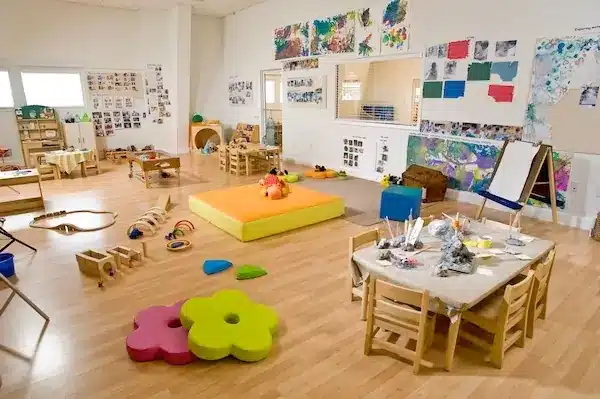
Our exploration of early learning and the critical phase of kindergarten, it’s clear these initial steps in education are more than just foundational; they’re transformative. Early learning centers play a pivotal role in shaping young minds, nurturing curiosity, and laying the groundwork for a lifetime of learning. The experiences children gain during these early years, coupled with the structured yet flexible environment of kindergarten, are instrumental in developing their cognitive, social, emotional, and physical skills.
As we’ve seen, early learning isn’t confined to acquiring academic knowledge; it’s about fostering a well-rounded individual who is curious, resilient, and socially adept. Kindergarten, then, serves as a crucial transition, preparing children not just for the academic rigors of school but for life’s many lessons. It’s a time where the joy of discovery is encouraged, where friendships are formed, and where the foundation for a love of learning is solidified.
Navigating the journey of early learning and kindergarten is an adventure—a blend of care, education, and discovery that sets the stage for a child’s future. In this adventure, early learning centers emerge not just as places of learning but as communities where children, educators, and families come together to support the growth and development of our youngest learners.
Let’s cherish and support these early steps, for they are the building blocks of a lifelong journey of discovery and growth. In doing so, we not only enhance the lives of individual children but enrich our communities and society at large.



